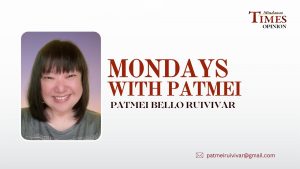BY HERMAN M. LAGON
THE COMEBACK was anything but predictable. In a race flooded by big names, massive war chests, and heavily publicized machinery, two names clawed their way back into the Senate with minimal fanfare but maximum substance: Bam Aquino and Kiko Pangilinan. It was not just a triumph of strategy or endorsement. It was, more than anything, a quiet but firm vindication of service, credibility, and track record.
Both men had been written off by most pre-election surveys. Pangilinan, once buried in the tail-end of projections, slid into a secure fifth place. Aquino, a supposed long shot, soared to second. This sudden surge, far from being an electoral glitch, mirrored something deeper: a recalibration of trust. And that trust came not from algorithmic targeting or partisan spin, but from the enduring memory of what honest, competent governance looks like.
The data scientists are scratching their heads, but their humility is refreshing. Pulse Asia President Ronald Holmes admitted that this election broke patterns. With their last survey held from April 20 to 24, the swing in rankings between that period and election day on May 12 was statistically jarring. According to Peter Cayton, a statistician from the University of the Philippines, surveys are snapshots frozen in time. Voter sentiment, however, is not, especially not in a volatile political climate, where grassroots movements can shift momentum overnight.
Here is the crux: statistical sampling—no matter how rigorous—can not always capture what happens on the ground when communities begin to talk to each other, when volunteers start mobilizing in palengkes and campuses, or when digital conversations over shared frustrations lead to real-world ballot decisions. The sampling method often used in surveys—multi-stage probability sampling—can only reflect what people are thinking at that specific moment. If major events, endorsements, or opinion shifts occur within the gap before the elections, they go uncaptured.
Bam and Kiko’s campaign was textbook understated. Without loud rallies or extravagant jingles, they worked like seasoned public servants. Their volunteers, mostly young, motivated, and organized by shared experiences of governance, were the unseen hands behind this win. The so-called ‘kakampinks’—supporters of the Robredo campaign—had not disappeared. They evolved into a quieter but equally determined force. And while Aquino and Pangilinan distanced themselves from overt party affiliations, they never disowned their roots. Instead, they expanded the definition of principled politics to include independence and pragmatism.
Late-stage endorsements also tipped the balance. Aquino got a nod from Iglesia ni Cristo, long known for its bloc voting, and Jesus is Lord Church. Pangilinan also received backing from JIL, plus that of MILF’s United Bangsamoro Justice Party (UBJP) and a few key mayors in vote-rich areas. While such endorsements may not always sway entire provinces, they help create what sociologists call “bandwagon moments”—pivotal cues that influence undecided voters.
Still, this is not to say the surveys failed entirely. They reflected broad trends, yes. Bong Go’s consistent top rank validated that. But they missed the fine print. They did not see Rodante Marcoleta sneaking into the top six. They did not foresee Akbayan topping the party-list vote despite not ranking in the pre-election top five. Conversely, high survey rankers like Ben Tulfo, Abby Binay, and Bong Revilla dropped out of the Magic 12 entirely.
There is a statistical explanation here. With margins of error of ±3% nationally and ±6% for regional subgroups (based on 1,200 to 1,800 respondents), movement of 8 to 10 positions is within the realm of possibility, especially for candidates within a clustered range. Jose Ramon Albert of the Philippine Institute for Development Studies emphasized that fluctuations are natural. Voter preferences can crystallize in the last 10 to 14 days before elections. The survey cannot, and should not, replace voter reflection. It is a guide, not a guarantee.
It is also time to rethink how we read the youth vote. Pulse Asia did not stratify by age in its last pre-election survey. As Holmes noted, the youth vote—particularly millennials and Gen Z—might have slipped past their radar. Yet, this vote may have made the biggest impact. Platforms like Facebook, Instagram, X, Discord, Reddit, and TikTok became ground zero for civic education and political discourse. Candidates with substance, regardless of their visibility, were dissected in long threads and crowd-sourced infographics. This tech-savvy electorate did not just tweet; it voted.
Aquino’s platform of strengthening RA 10931—the Universal Access to Quality Tertiary Education Act—landed with particular resonance in a country grappling with learning poverty and inaccessible higher education. Pangilinan’s proposed expansion of a national feeding program and support for agricultural resilience offered immediate, tangible solutions amid rising food prices. These were not just talking points. These were plans rooted in long-standing advocacies, and voters recognized that.
Statistical noise cannot drown out a signal when people decide they have had enough of mediocrity. These victories show that in a sea of celebrity politics, there is still room for quiet integrity. These wins do not declare that traditional surveys are obsolete, but they do challenge us to interpret them with nuance. Public opinion is not data alone; it is context, memory, movement, and momentum.
Perhaps the real lesson here is a simple one: track records matter. Even in a culture often accused of amnesia, voters eventually remember who showed up, who delivered, and who stood for something bigger than self. Aquino and Pangilinan may have surprised pundits, but they did not surprise those who paid attention. Their story is less about defeating giants and more about honoring legacies.
This 2025 midterm election reminded the nation that political resurrection is not a miracle. It is earned. And when people come together—not for a personality, but for a cause–the results, though statistically improbable, become politically inevitable. Whether surveys will catch up to this reality remains to be seen. But as voters have shown, their judgment runs deeper than numbers on a page. (PAMMCO)
***
Doc H calls himself a ”student of and for life” and, like many others, wants a life-giving, why-driven world dedicated to social justice and happiness. His views may not reflect those of his employers or associates.




